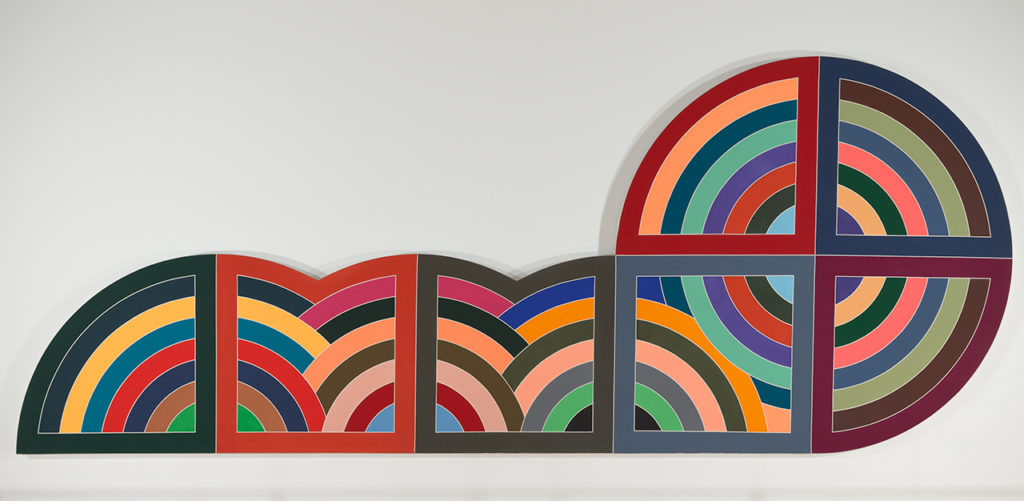Raqqa II (work of art)
Artwork Info
Key Ideas
- This painting is part of Frank Stella’s Protractor series, in which he created large paintings of interweaving circles and lines. Each painting in the series is named after a Middle Eastern city that was laid out in a circle. Raqqa II is named for the city of Raqqa in Syria.
- Stella used a math-based approach to painting. When he created Raqqa II, he was known as a hard-edge painter because he painted clean, hard lines and solid blocks of color.
- Unlike many American artists in the 1960s and 1970s, Stella was not interested in making art that expressed feelings or stories. He focused on his artwork as physical objects rather than metaphors for something else.
Learn More
Raqqa II is part of Frank Stella’s Protractor series that he began creating in 1967. Although he did not complete the series, Stella had planned for it to include 31 paintings in three different formats: interlaces, rainbows, and fans. He named the series for the half-circle shape of a protractor. He named the paintings after cities in the Middle East that originally had a circular layout. Raqqa, a city in Syria, was an important trade center under Arab rule during the Middle Ages.
Stella used a careful, mathematical approach to creating Raqqa II and the other paintings in his Protractor series. The bright colors and giant size of Raqqa II make it stand out and dominate its surroundings. What first appears to be a childlike pattern is actually a highly complex exercise in geometry.
In creating his paintings, Stella aimed to reduce the image to paint and canvas alone. He was known as a hard-edge painter who made lines and shapes appear completely solid. He avoided telling a story or making a statement in his work, which was very different from other abstract paintings created during the abstract expressionist movement. Abstract expressionist painters aimed to express their feelings and beliefs through their art. They often used loose, spontaneous, sweeping brushstrokes. Stella, however, was inspired by the careful geometric art of Josef Albers, whose work is also included in the People’s Collection.
tags: line, shape, color, cycle, movement, order, place, variation, math
Additional Resources
Resources for Teachers:
- Explore a lesson plan in which students draw circles using a compass and design their own Stella-inspired artwork.
- Explore a student activity that connects Raqqa II to a poem by Randall Mann.
- Explore another classroom activity in which students create fabric designs based on this painting.
- Watch a video to hear a curator discuss the architectural qualities of Raqqa II.
Resources for Students:
- Explore family activities related to this painting.
- Watch a video of Frank Stella discussing his art and inspirations.
- Compare Raqqa II to Dance by Robert Motherwell. Notice the differences in the two artists’ styles of abstract painting.
- Play a geometry game.

